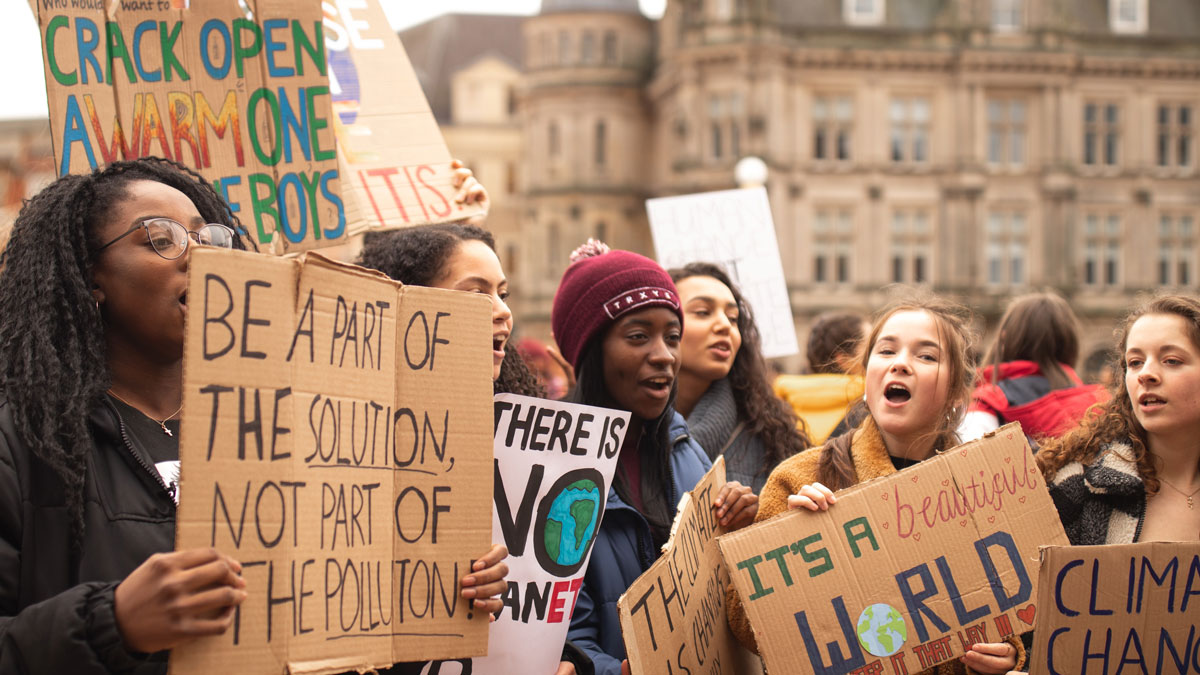The first Intergovernmental Panel on Climate Change (IPCC) assessment report on climate mitigation since the Paris Agreement was released today. This is likely the IPCC’s last word before the window of opportunity to stop warming at 1.5°C disappears, after which scientists said life-threatening climate consequences and feedbacks will intensify.
Led by hundreds of scientists convened by the United Nations Environmental Programme and the World Meteorological Organization, the summary of the report was approved by 195 governments after 16 days of discussions and one 40-hour marathon session that stretched into Sunday night.
The report gives the world a failing grade. International policies implemented by the end of 2020 will miss the Paris Agreement goal of limiting warming well below 2°C. Current trends suggest that by 2100, the world will warm 3.2°C compared to preindustrial average temperature, with a spread of 2.2°C to 3.5°C possible.
“Reaching 3.2°C will be nightmarish,” said Andrea Simonelli, a political scientist at Virginia Commonwealth University who was not involved in the report. “The threshold for habitable is already being pushed to the limit in many places.”
“There’s that Churchillian phrase—never waste a crisis.”
Immediate action is possible, however. Ramping up wind and solar; cutting food waste; and improving the management of forests, croplands, and grasslands are just a few of the increasingly cost-effective options that enjoy widespread public support, according to the report.
“There’s that Churchillian phrase—never waste a crisis,” said Michael Grubb, an IPCC author and professor of energy and climate change at University College London.
In a stark reversal to decades of emission growth, 24 countries have reduced their emissions over the past 10 years. Additionally, economic growth for 43 of 166 countries was decoupled from rising greenhouse gases during the years 2010–2015, which ensures that countries can reap the benefits of increasing GDP (gross domestic product) without producing more emissions. And while global emissions rise each year, the rate of growth is slowing.
“We’re in a situation where new zero-carbon electricity costs between half and one third of what we’re now paying for electricity. If that’s not an opportunity economically and politically, then I don’t know what is,” said Grubb.
But these positive changes aren’t enough because emissions must peak no later than 2025 to hit the Paris Agreement, concludes the international group of scientists behind the report.
Crucial Next Step
International financial cooperation is a “critical enabler” in lowering emissions, but innovation in developing countries is lagging because of financial shortfalls.
Although the international community pledged in Copenhagen to give $100 billion per year to less wealthy nations starting in 2020, it has yet to meet that promise. The number hit $79.6 billion in 2019, the most recent year analyzed. Importantly, three large economies—the United States, Canada, and Australia—aren’t paying their fair share, according to the World Resources Institute. This pledge has been a stickler in U.N. Conference of Parties (COP) deliberations in the past and will come under scrutiny in COP27 later this year.
Contentious Proceedings
Although the road maps laid out in the report suggest revolutionizing every sector, some scientists like Kevin Anderson at the University of Manchester warn that the most essential part of the report, the Summary for Policymakers, may be watered down by participating governments. But supporters, such as Stephen Cornelius, the U.K. chief adviser on climate change for the World Wildlife Fund, say that the process is necessary to ensure that all governments have political buy-in, reports the Guardian.
Removing fossil fuel subsidies alone could cut carbon dioxide emissions globally by 1%–4% and greenhouse gas emissions by up to 10% depending on the region.
Another controversial aspect of the release surrounds the future of fossil fuels. One reason that the discussions stretched into Sunday evening is that Saudi Arabia wanted fossil fuel use to continue in the future, rather than phased out entirely, reported the Guardian. The report, however, states that the world must rely on no- or low-carbon energy technologies in the future; removing fossil fuel subsidies alone could cut carbon dioxide emissions globally by 1% to 4% and greenhouse gas emissions by up to 10% depending on the region.
Changes Support Human Health
There would be drastic changes to everyday life in the next 8 years if governments commit to limiting warming.
Pandemic shutdowns led to the largest annual drop in global energy-related carbon dioxide emissions since World War II and brought broad economic pain. The drop in 2020 emissions is the same scale required to meet the 1.5°C–2°C goals, but “that does not mean that we have to be all locked up and go through austerities to reach our climate goals,” said IPCC vice-chair and environmental science and policy researcher from Central European University Diana Ürge-Vorsatz. Emission cuts can improve lives, she added.
There would be drastic changes to everyday life in the next 8 years if governments commit to limiting warming between 1.5°C and 2°C: We’d walk, bike, and use electric vehicles more. Our dinner plates would feature more plant-based proteins. Our homes and lights would be powered by wind, solar, geothermal, nuclear, and hydropower energy. People wouldn’t fly as often, and we’d live and work in retrofitted buildings that are net zero energy and net zero carbon.
Opportunities for U.S. Policy
“The Senate should pass the $555 billion in climate investments immediately.”
Energy, climate, and environment politics researcher Leah Stokes at the University of California, Santa Barbara, said that the United States is “long overdue” in addressing climate change. “The Senate should pass the $555 billion in climate investments immediately.”
Arvind Ravikumar, a professor in the Department of Petroleum and Geosystems Engineering at the University of Texas at Austin, emphasized limiting methane emissions from oil and gas. “This is something lawmakers on both sides of the aisle agree on,” Ravikumar said. Doing so “would go a long way in putting the U.S. on the pathway to net zero emissions by 2050.”
—Jenessa Duncombe (@jrdscience), Staff Writer

